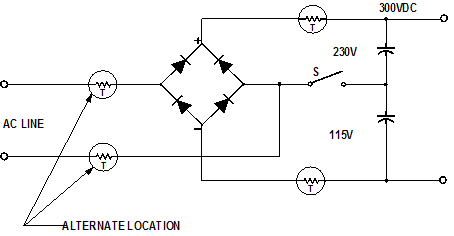Power Dissipation for Temperature Detection Circuits
NTC Thermistor: Power Dissipation can introduce error into your temperature detection circuit.
See calculation below:

Located on the right side of the voltage divider of the bridge where the thermistor is located, we have by ohm’s law: I = V/R = 7.55v/6282 W=1.202 mA.
The power dissipation in the thermistor = I2R = (0.0012) 2 (5282) = 0.0076W =7.6mW
But if you look at the specification sheet for NT0310391 we will see that the dissipation constant = 4.50 mW/°C.
Therefore the error introduced as self heating of the thermistor could be as large as
Power/DC= 7.6mW/4.50mW = 1.68°C
To reduce this error we can either use a part with a higher dissipation constant or reduce the constant DC power supply to 1.0-volt output so that the total dissipation is much less than its dissipation constant.
These are valid reasons why our voltage reading and our temperature do not correlate exactly. So, why not simply use the resistance temperature curve as opposed to a bridge diagram? The reason is very simple.
The bridge diagram allows a linear voltage-temperature characteristic: V=mT+C eqn 4
Where:
V= voltage indicator
M= slope of the line
C= contstant of equation
T= temperature
Using the voltage, it is very easy to decode, translate or send signals regarding the temperature. The equivalent resistance-temperature curve is a non-linear equation resembling:
1/T= a + blnR + C (lnR)2 + …..
which is a much harder equation to work with.
Ask a Question




